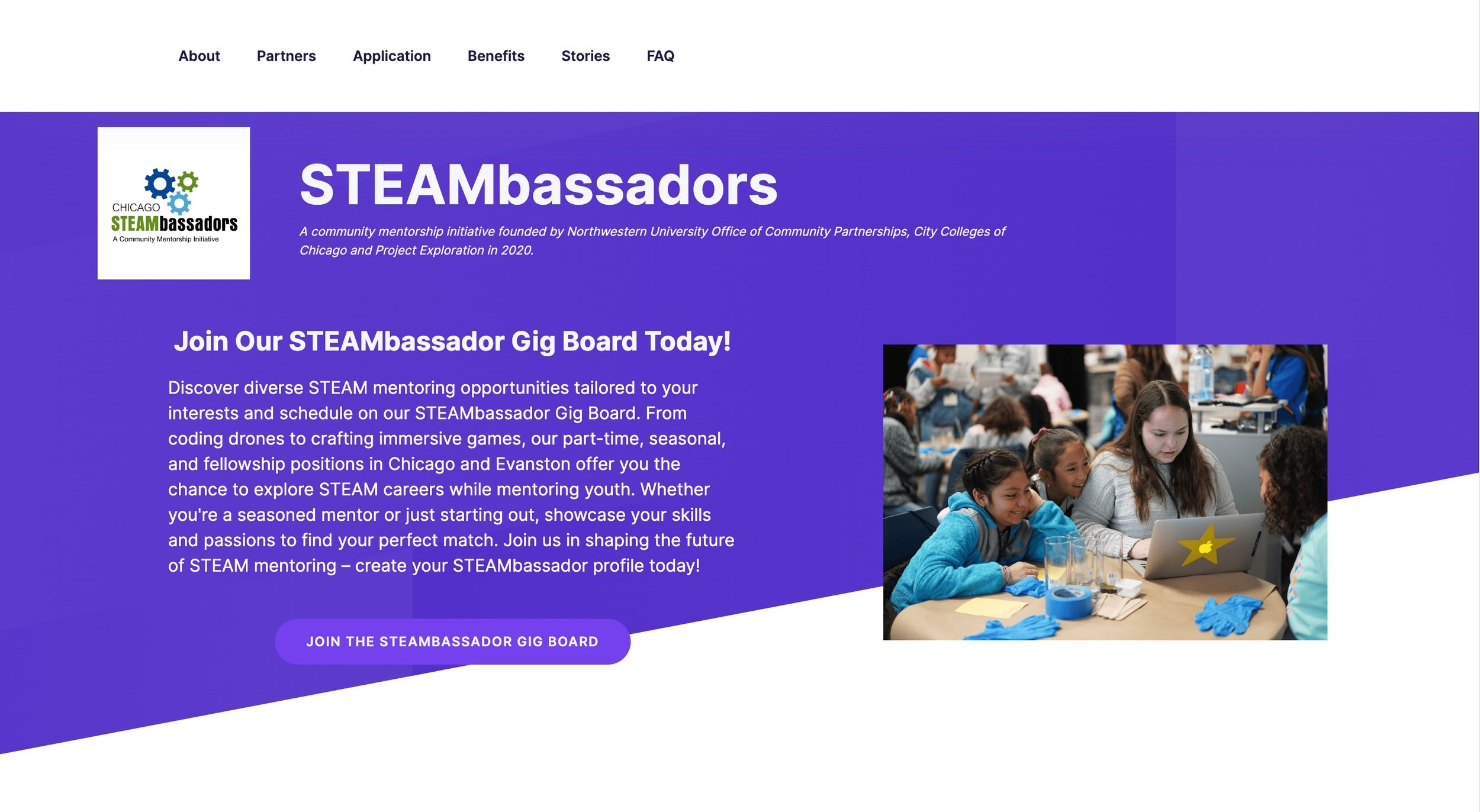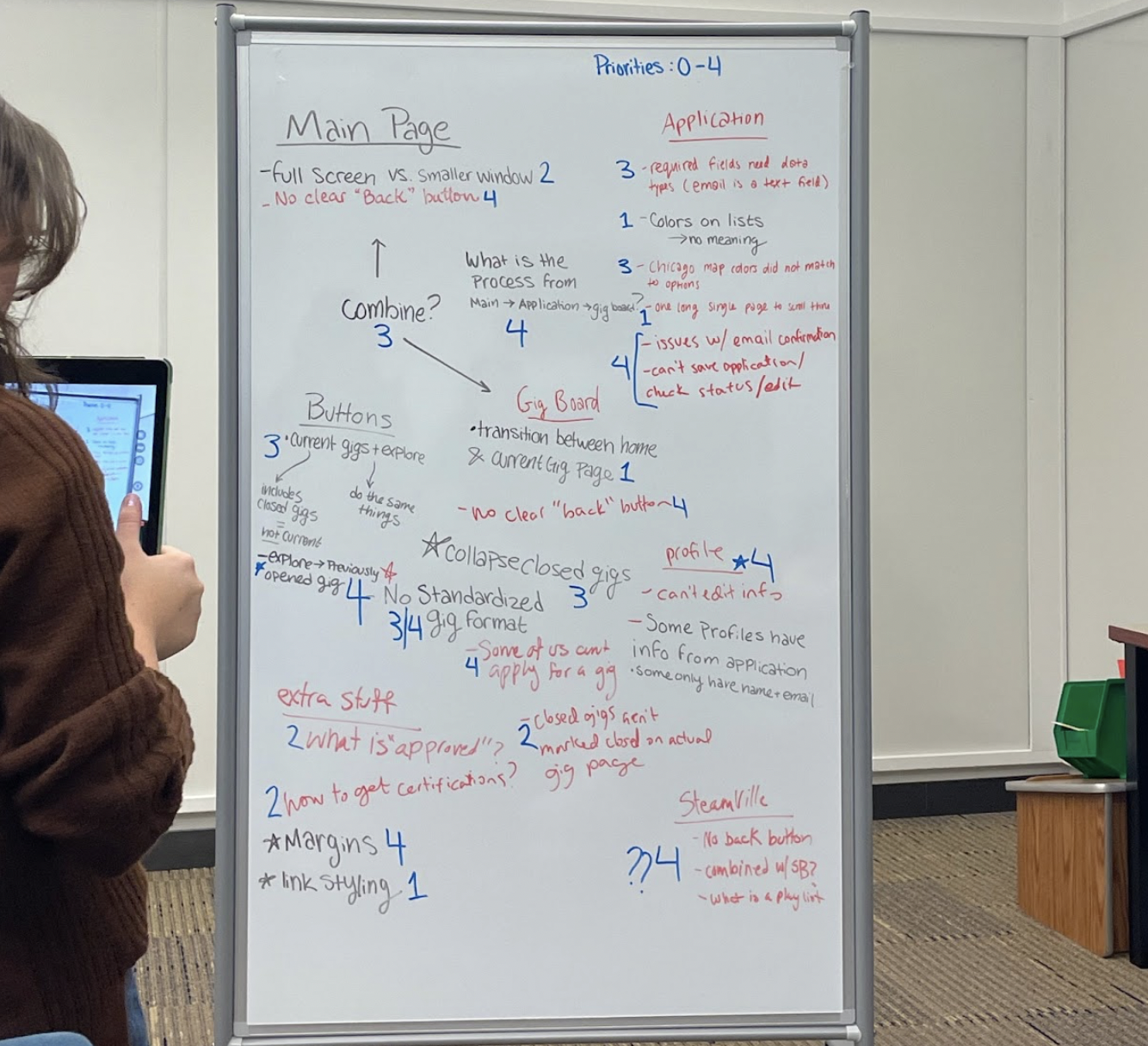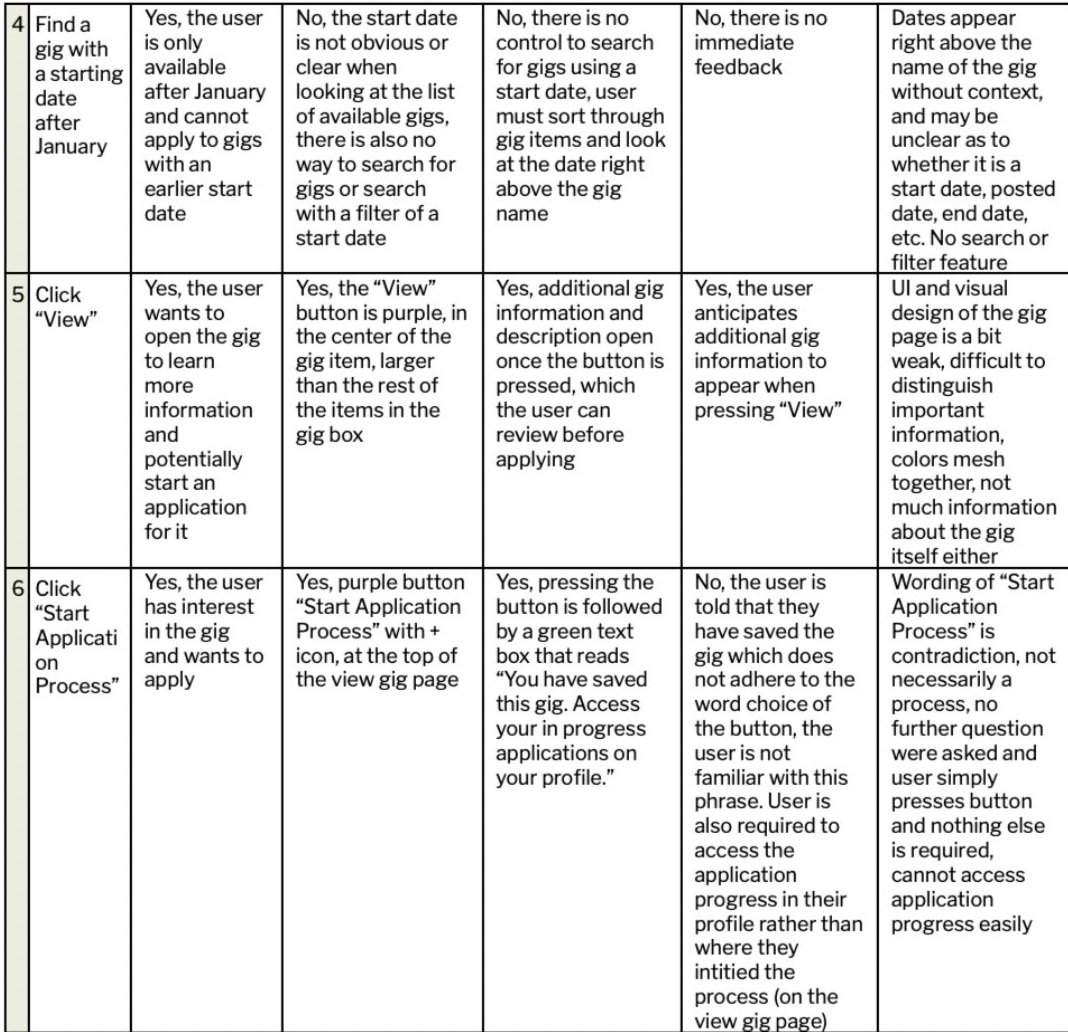
The Project
Time line
10 weeks (Jan 2024 - Mar 2024)STEAMBASSADORS
Steambassadors Platform User Research
STEAMbassadors is a Chicago based community mentorship program that seeks students who have an interest in science, technology, art, or math to teach, mentor, and lead youth STEAM activities. Once accepted into the program, STEAMbassadors can search and apply to gigs that incorporate their interests using the Gig Board platform. My research focused on the perspective of prospective applicants in effort to improve the overall user experience in the application and job search process.
My Role
UX ResearcherProject LeadSkills
UX ResearchCognitive WalkthroughHeuristic EvaluationsUser InterviewsUser Testing Data AnalysisPersonasAffinity Diagramming Platform
MuralFigma Steambassadors.orgSlackTeam Size
4Responsibility
Creating interview scripts tailored to target audienceFacilitating interviews and usability tests
Analyzing qualitative and quantitative data into valuable insights
Reporting progress during each research phase
Collaborating and communicating with team members
Objective
Identify positive findings and usability issues within the STEAMbasssadors platforms to recommend design implementations and improve the experience of future applicants.
For this project, my team and I carried out assessments using both heuristic evaluation and cognitive walkthrough methods, focusing on the completion of several tasks.
Our overall goal is to improve the overall user flow of the STEAMbassadors experience and identify ways to encourage more applicants.
Project Summary
“How might we improve the application and job search experience of current and potential applicants?”
— Professor Denise Nacu,
Methodology: Heuristic Evaluation, Cognitive Walkthrough
To begin the examination process, I conducted a heuristic evaluation of the STEAMbassadors experience as a whole, using Jacob Nielsen’s 10 heuristics. Using this set of heuristics, I examined the STEAMbassadors application process with a specific focus on the gig board platform, categorizing each finding and rating each one (qualitatively) by level of severity.
After completing my individual evaluation, I met with 6 other expert evaluators to discuss our usability findings, identify priorities, and ideate potential solutions. Together, we listed our ideas on a whiteboard and prioritized usability issues on a scale of 0-4 for further research. This collaboration allowed for a combination of perspectives and a new set of thoughts.
We found that the majority of usability issues arose during the application and gig search processes.
I then conducted a cognitive walkthrough to imagine the user’s thoughts and actions when interacting with the interface for the first time. I focused on the gig search process in which a user had been accepted into the program and wanted to find a gig that adhered to their availability. I examined this task answering the following questions:
Will the user realistically be trying to do this action?
Is the control for the action visible?
Is there a strong link between the control and the action?
Is the feedback appropriate?
Expert Evaluation
Methodology: User Interviews, Informed Consent, Personas, Affinity Diagramming, Data Analysis
My team and I focused on researching students with an interest in STEAM topics and mentorship. Our goals were to understand the needs, wants, and reasonings of prospective STEAMbassadors.
To ensure we had accurate results and relevant data, we used screener questions catering toward the target audience.
18- 24 year old students
Interest in STEAM
Live in the Chicagoland area
I conducted two in person interviews with questions designed to explore the participants' levels of interest and experiences within the STEAM fields and mentorship. I collected this data by recording audio and taking notes. My team and I were able to conduct nine interviews and utilized this data to create an affinity diagram to discover patterns and themes. We also created dimensions by graphing our interview responses.
Affinity Mapping
User research
Diagram
Dimension
After gathering and organizing our data, we formed insights about the frustrations, goals, and motivations of our users.
By analyzing this qualitative data, we discovered that despite a high interest in STEAM, interest in mentorship was more spread out across the spectrum. Additionally, most users faced interruptions and challenges within the application process that caused feelings of frustration and annoyance towards all applications.
Research Findings
[1]
[2]
Methodology: Usability Testing, Data Analysis
My team and I then tested the usability of STEAMbassadors website and Gig Board platform to assess the efficiency and user satisfaction of the process as a whole, but with specific interest in the initial application and applying for gigs. We used data from our interviews, heuristic evaluations, and cognitive walkthroughs to identify specific usability concerns and create the main points of our testing.
Our tasks focused on five key features:
Submitting STEAMbassadors Application
Accessing Gig Board
Searching and applying to Gigs
Checking status of Gig application
Accessing certifications
I facilitated three usability tests and observed a total of three tests while recording audio and taking notes. Our evaluation measures were carefully designed to capture both qualitative and quantitative data.
Through our conducted tests, we successfully identified several common user pain points, shedding light on key areas for improvement within the STEAMbassadors platform. Our research primarily focused on assessing accessibility, design, and user concerns. Here are a few of the main insights derived from our findings:
Usability
Redundancy observed between the application process pages, and emails, as they offered similar functionalities
Design
Most users appreciated the consistent use of a purple theme and simple color contrasts
User Concerns
A notable lack of trust was observed among users, potentially stemming from concerns related to data privacy and security
TESTING FINDINGS
All observations and recommendations were presented task by task using a positive to very severe metric. Overall, our findings suggested changes regarding information architecture, graphic design, and content design.
Usability Testing
Reflection
Screener Questions
For this project, I had the opportunity to join the process of contributing my opinion in building protocols for a real project and also to have hands-on experience in the process of doing user research. During the research process, the interview is the time I find the most interesting, because it allows me to see the diverse perspectives of users even when I try my best to think about what they think, and it proves it even more to me the quote “you are not the user.”
Our Process
Takeaways
While working on this project, I learned the true importance of user research. Prior to this experience, I was less familiar with the distinction between UX Design and UX Research. However, taking the time to work one on one with users and understand the audience has significantly changed this perspective. I can now value the research necessary for data-driven solutions.
Overall, this experience has improved my research skill set and enhanced my communication and collaboration skills. In the future, I hope to utilize this research to design the recommendations and improve the STEAMbassadors experience.








